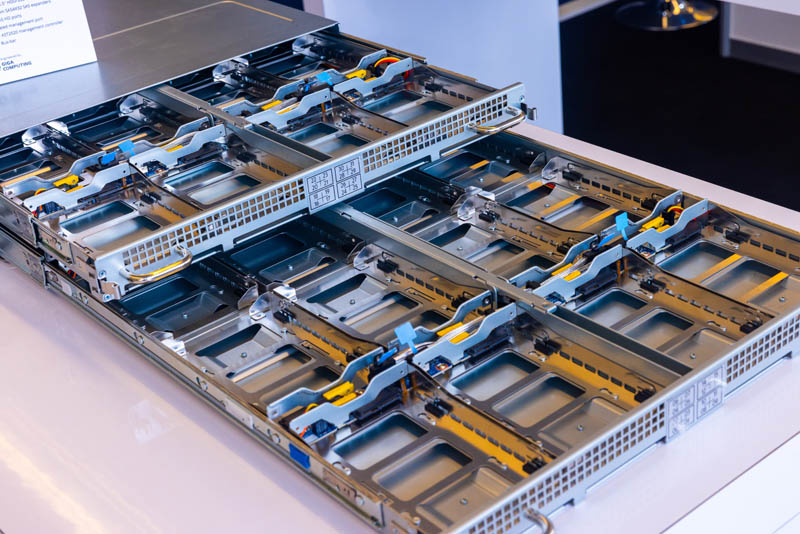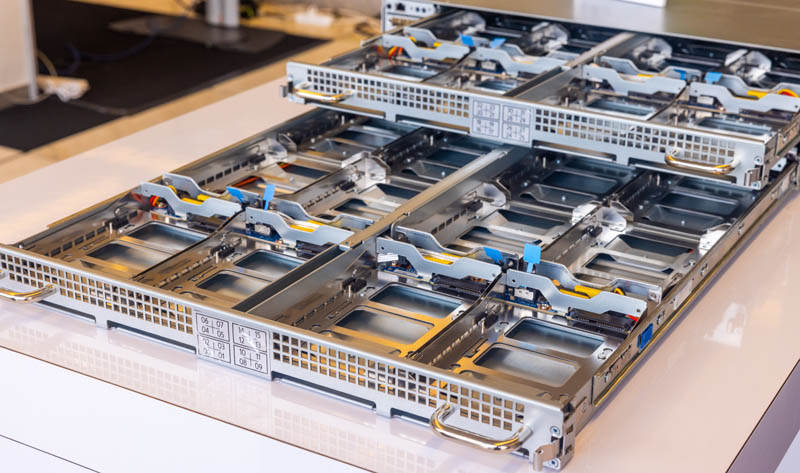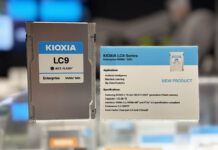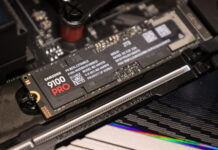We saw a new Gigabyte / Giga Computing OCP storage node at the OCP Regional Summit in Prague this year. The Gigabyte TO24-JD1 is an ORv3 platform designed to fit 32x 3.5″ HDDs in 2OU of rack space. One of the other neat features is that this JBOD also sports Broadcom SAS4 connectivity.
Gigabyte Giga Computing TO24-JD1 Broadcom SAS4 2OU JBOD at OCP Regional Summit 2023 Prague
While the JBOD may have looked like a simple 2OU system on the show floor, STH was able to pull the JBOD trays out and take a look inside. Each tray has four 3.5″ drive slots across and then four rows deep for a total of 16 drives per tray.

Here is a look at the JBOD from the other side. We tried getting inside the system to show off the Broadcom SAS4X32 expanders and the ASPEED AST2520 BMC, but we did not get to see those. There were, however, 8x Mini-SAS HD ports for connectivity. This is a dual-port JBOD enclosure.

The individual drive mounting brackets are toolless in their design. That makes sense, especially with deploying these at scale.

Something that was notable is that there is a lot of cabling to make all of this work, but it was hidden within the drives in a very neat manner, something that we do not see on all JBODs.
Final Words
This TO24-JD1 design is aided a bit by the width of the ORv3 racks. At the same time, it is a cool design and it uses SAS4. While many still look at SATA as being cheaper or PCIe/ NVMe for being faster, SAS4 helps build larger topologies and is roughly twice the speed of SAS3. For those that simply need a lot of storage, SAS4 is going to be the next-gen technology. This is the first OCP JBOD we have seen with the new Broadcom SAS4 expanders.





What is the advantage of a 2OU, 2-tray device vs 2x 1OU devices? Does the extra mechanical expense and complexity counter the cost of the BMC and SAS expander?
While we’re at it… what are they expecting people to use 3.5″ SAS-4 devices for? That’s gross overkill for any HDD that I’ve ever seen specs for–it’s roughly x4 PCIe 3.0 speed, or about 10x as fast as any HD I’ve ever seen. And with 8 uplinks (presumably 4 per expander, with 4 lanes each, for 16×24 Gbps or 384 Gbps), you’re not even oversubscribed upstream.
I see that Kioxia has 2.5″ SAS-4 SSDs, but no 3.5″ devices.
So is this just a pure demo project, or is there supposed to be some sort of demand for something like this somewhere?